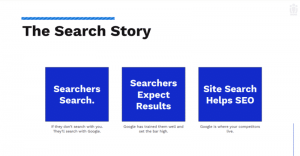![]()
In case you haven’t heard, there’ve been some recent media rumbles that report Google AdWords isn’t practical for small businesses. In fact, one New York Times piece concluded that paid search isn’t the universal darling marketers would like it to be.
The story grew from a nugget of truth: Venturing into paid search is associated with some risk – not just for small businesses, but for any organization new to the game. Not only can it be cost prohibitive, paid search is fraught with horror stories about high costs, low ROI and prolific click-fraud landmines.
So, does this mean you should abandon your plans to launch an AdWords campaign – or give up on your current, struggling AdWords strategy? No!
AdWords allows us to track what happens during the initial search and click of a keyword. Thus, strategic paid search can be a great way to gather informed data about your visitors, get some insights on your sales funnel and figure out how prospects are finding and connecting with your company. In addition, PPC provides immediate, qualified traffic to your website in a short period of time. These are all great reasons to soldier on and make paid search work for you!
If your AdWords campaign isn’t working, don’t throw in the towel. Instead, find the source of the problem. Try one of the following three fast fixes, and prime your PPC campaign to deliver big results for your brand.
- Reevaluate your copy, and make sure it’s on-message.
In any and all instances, your landing page headline and digital ad messaging should complement each other. Your AdWords score allows a site to discover the cost per click. This score can be improved by having consistent content between the ad message and landing page text.
Your landing page headline is your first chance to communicate with your audience. It shouldn’t be confusing or vague – but it should compel visitors to take a closer look. Addressing a specific point that is related to the content of the website will catch a reader’s attention more than a generic headline.
And remember: Your website is the voice of your brand. Spelling and grammar must be double and triple checked to ensure that it’s flawless before posted for public view. Poor grammar does not communicate professionalism. It can damage consumer trust in your brand, and cast doubt on the quality of your product or service.
- Build custom landing pages – and optimize them to invite more clicks.
Many brands make the mistake of sending all their paid search traffic to their homepage. But if you create specific landing pages based on keyword campaigns, you can direct users to those custom landing pages according to their search criteria.
Once you’ve created landing pages around your AdWords campaign, make sure those landing pages are properly optimized! For example, many landing pages corral links in footers for the sake of design. Yes, it looks clean, but this strategy equates to many missed opt-in opportunities.
Make it easy for people to make a connection: Put your signup form at the top of your landing page, alongside some other engaging content. This strategy will deliver maximum views to your form without requiring page visitors to scroll all the way down to the bottom.
The same treatment should be given to conversion buttons. For best performance, buttons should be visually dynamic and paired with a clear call to action – either positioned directly below the button, or on the button itself. Make your button big and bright, and don’t make visitors scroll to see it.
- Craft a strong call-to-action.

As marketers, we want to make our communications with customers as turnkey as possible. This isn’t the time to be obscure. When a visitor reads your landing page headline, it’s important they know what to do next.
Don’t be afraid to spell it out for your users – they’ll appreciate your clarity, and will pay you back with dividends. When Mozilla Firefox changed its call to action from “Try Firefox 3” to “Download Now – Free,” it outperformed the original by 3.6%, and had a confidence level of over 99%, resulting in 500 more downloads during Mozilla’s testing period.
Just remember: Adwords campaigns are only one piece of a big and dynamic marketing puzzle. Try leveraging one or more of these three tips, and give your paid campaign another try this spring!
(257)
Report Post





